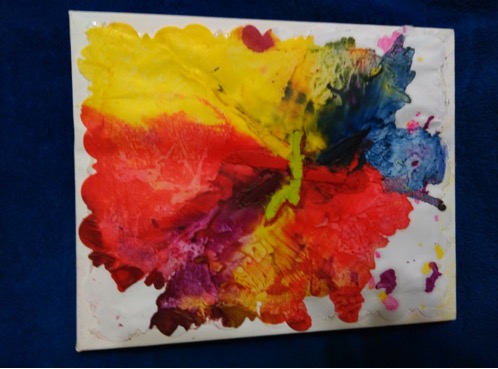

Using art as therapy
Archive 2015 Feb 25, 2015 Nima Rajan

Most people have fond memories of their childhood and how art was a way of expressing their creative young minds, but as we grow and face obstacles in life we tend to forget the positive effects of expressing ourselves through art. For some more than others, art can be a powerful tool for releasing all the bottled up stress their lives have accumulated.
Post-traumatic stress disorder is a mental illness many Canadians deal with on a day-to-day basis, and yet admitting to having a problem is the hardest step for PTSD patients. It occurs due to a traumatic event that an individual has experienced involving assault, injury or even death. The often unexpected trauma from such an event tends to linger in the minds of PTSD patients and can severely affect the individual’s life style. Many sufferers have had no control over the traumatic event and suffer in silence.
“A lot of PTSD patients most likely would find other methods to relieve themselves of the stress, such as substance abuse, anger and violence towards oneself or others. This becomes an issue for the family members and loved ones of PTSD patients and seeing a therapist is not an easy decision for a patient to make,” says Kiran Gill, fourth year nursing student at Humber College.
Art therapy has become a popular psychotherapeutic method for PTSD suffers and is available for patients of all ages.
“ I can see how it can be applied to PTSD since soldiers often suffer flashbacks. Visualizing it in the form of art helps them to understand that its not actually real in the present, but a memory of something that happened before, as a coping mechanism,” Gill tells us.
“Art Washes from the soul the dust of everyday life,” – Pablo Picasso.
A quote Afua Pabi, artist animator and peer facilitator, remembers as she teaches her art therapy sessions, “Her Life, Her Canvas: Survivors Supporting Survivors.”
For three hours, bi-weekly, Pabi works with women and youth survivors of violence (not only restricted to domestic violence), in her art therapy sessions held at local community centers in Brampton facilitated by the Interim Place.
“The group provides women and youth with a safe space where they can meet and provide mutual support to one another in a place which promotes respect, trust and warmth and empowers these individuals to make changes and decisions to enhance their lives through the use of arts-based therapy methods i.e. poetry, crafting, painting, photography and drumming,” says Pabi.
The duration of her workshops are eight weeks long and held every Tuesday and Thursday. Pabi covers the PTSD recovery process slowly and comfortably with her patients through different art activities.
The sessions start with the topic of “building safety,” where the group gets to know each other to build a safe comfortable environment, and the first art activity would be weaving with pipe cleaners. Pabi then gets her group to identify their emotions, “why might I be feeling this way, how should I deal with this?” She gets them to express their innermost thoughts on paper with crayons.
“ The colors and textures they use and create all have meaning. Like darker colors might mean that they are hiding their feelings behind darkness.”
Pabi then gets group members to reflect on each others work as well as their own, so that they may recognize similar feelings, acknowledge that they are not alone, and draw on each other for support. She then continues with “coping,” where she gets the group to discuss with each other on methods they can use to cope with situations like peer pressure, bullying, stress, anxiety, and depression.
The next step in her class is called “self acceptance,” where Pabi instructs the class to make a vision board in which they can express their future ambitions as well as their identity. She follows with “healthy relationships,” in which the group constructs a picture frame and discusses developing a healthy relationship with oneself before trying to have them with others.
The class then moves towards “moving on and forgiveness,” where the group learns to forgive themselves and others as a way of moving forward, with the use of spoon art. After they discuss “leadership and giving back,” in which they think about ways to set good examples and help others, which in turn will help them move forward. This is when the group has the opportunity to be creative and come up with their own ways of expressing themselves artistically.
Pabi ends her workshop with “empowerment,” where the group does bead work to create wearable pieces to remind themselves of their journey in finding their inner strength.
These art workshops have proven to be an effective psychotherapeutic method to relieving PTSD, and are held all over Canada for interested patients.
“Art therapy has a way of allowing your inner experience out visually, so that you may recognize your strengths and weaknesses and reframe how you live,” says Debbie Anderson, Canadian Art Therapy Association (CATA) member.










